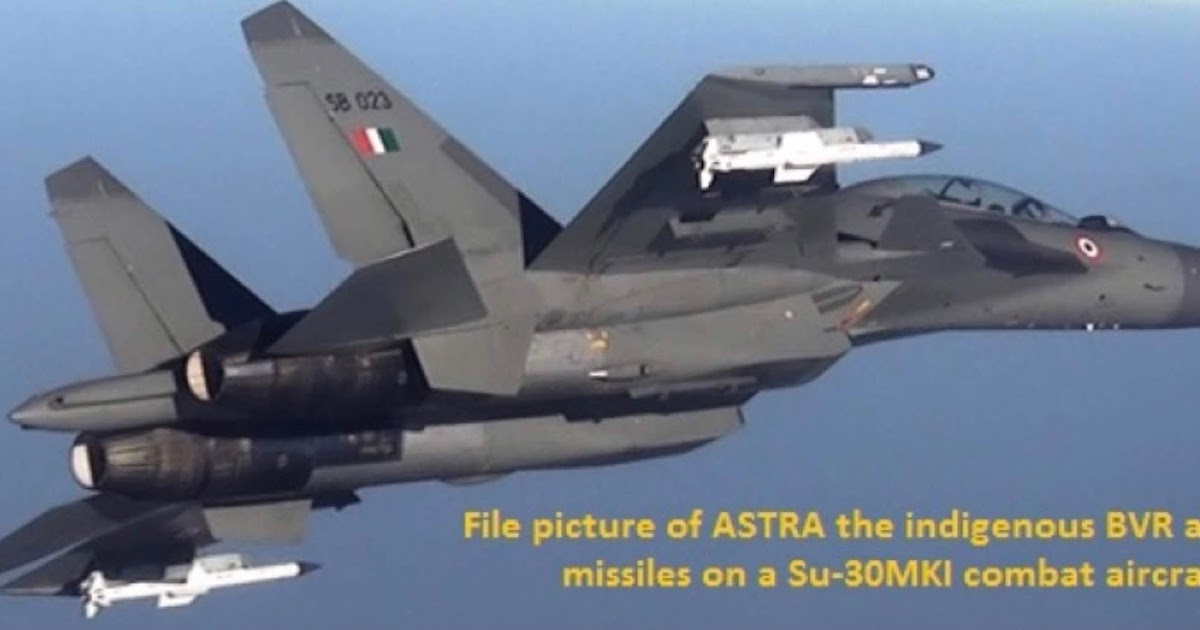
The Astra Mark 1 has a range of 75 km, while the Mark 2 (under development) aims for 100 km
By Vikas Gupta
Defence News of India, June 1, 22
The Ministry of Defense (MoD) on Tuesday signed a contract with Bharat Dynamics Limited (BDL) for the construction of Astra Mark-1 Beyond Visual Range Air-to-Air Missiles (BVRAAM) worth Rs 2,971 crore for the Indian Air Force (IAF) and Navy.
The Astra Mark-1 missile, which was developed by the Defense Research and Development Organization (DRDO), can engage enemy fighter jets at ranges of up to 75 kilometers, the Ministry of Defense said. Defense at the Lok Sabha on May 6, 2016.
“Until now, the technology to locally manufacture missiles of this class has not been available,” the Defense Ministry said on Tuesday. Having been developed by the DRDO, it will now be purchased under the priority category “Buy (Indian – designed, developed and manufactured in India)” or Buy (Indian – IDDM).
“The missile, for which successful trials have already been undertaken by the IAF, is fully integrated into the Sukhoi-30 MKI combat aircraft and will be gradually integrated into other combat aircraft, including the combat aircraft Light (Tejas). Indian Navy will integrate the missile on the MiG 29K fighter jet,” the MoD said.
“The Astra’s BVR capability provides large ‘standoff distances’ to our own combat aircraft, allowing them to neutralize the adversary aircraft without exposing themselves to adversary air defense measures…This missile is technologically and economically superior to many imported missile systems,” the MoD said.
“The transfer of technology from DRDO to BDL for the production of the Astra Mark-I missile and all associated systems has been completed and production at BDL is underway. This project will serve as a catalyst for the development of infrastructure and testing facilities at BDL. It will also create opportunities for several MSMEs (micro, small and medium-sized enterprises) in aerospace technology for a period of at least 25 years,” the Ministry of Defense said.
The IAF operating 600 to 700 combat aircraft, it will need several thousand Astra missiles. With air-to-air missiles costing in the region of Rs 15 crore each, the Astra will provide major business opportunities for Indian companies.
The Astra BVRAAM involves radically different technological challenges compared to ballistic and tactical missiles. In a typical Astra engagement, the launcher and target move at speeds in excess of 1,000 kilometers per hour.
Fired from a pylon on the wing of a Sukhoi-30MKI fighter, the Astra’s smokeless booster accelerates it rapidly to around 4,000 kilometers per hour. As the missile gains on the target, the Su-30MKI tracks the target continuously on its radar and directs the missile towards it via a data link. About 15 kilometers from the target, the Astra’s onboard radio seeker locks onto the target; now he no longer needs to be guided. When it reaches a few meters from the enemy fighter, the Astra warhead is triggered by a “radio proximity fuze”, spraying the target with shrapnel and bringing it down.
Only a handful of missile builders – in the United States, Russia, Europe and China – have mastered the technologies that go into the BVRAAMS. India now joins this elite group.
On the drawing board is a longer-range Astra Mark II, which will shoot down enemy fighters at ranges of up to 100 kilometers.






